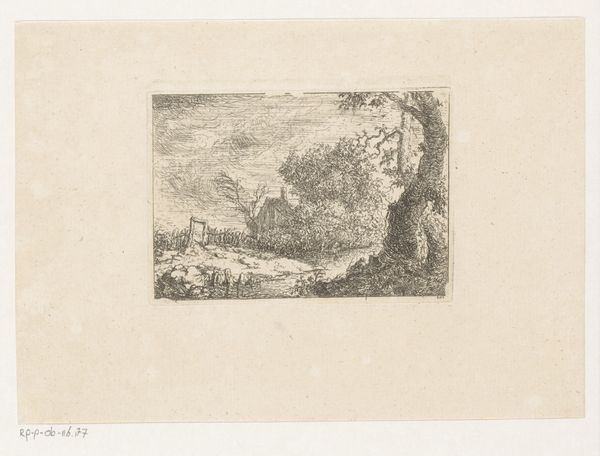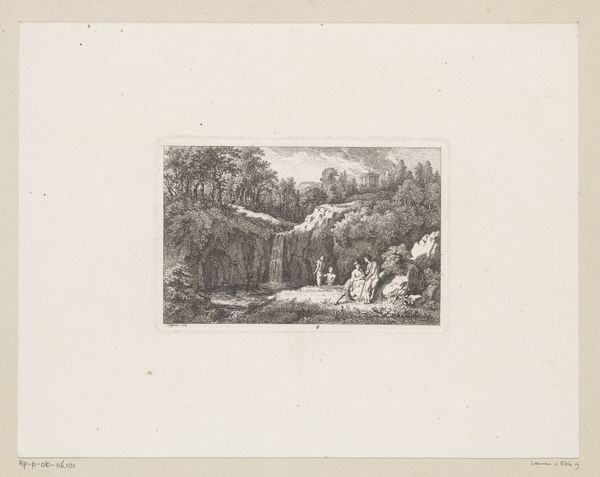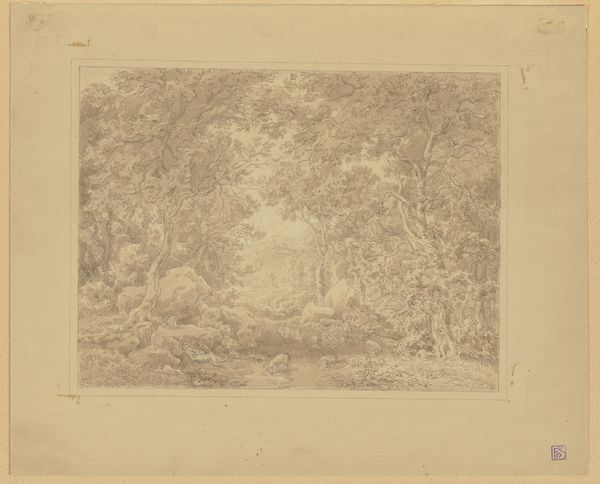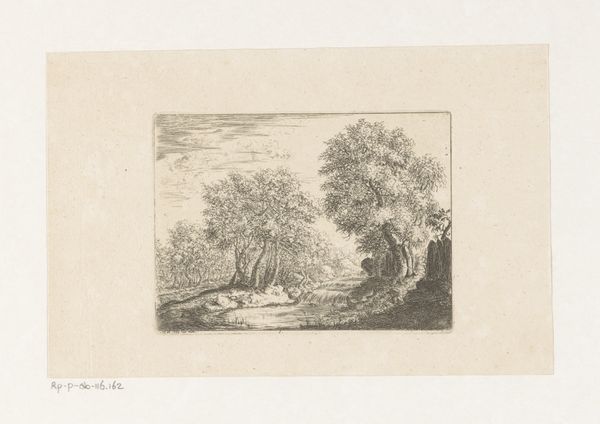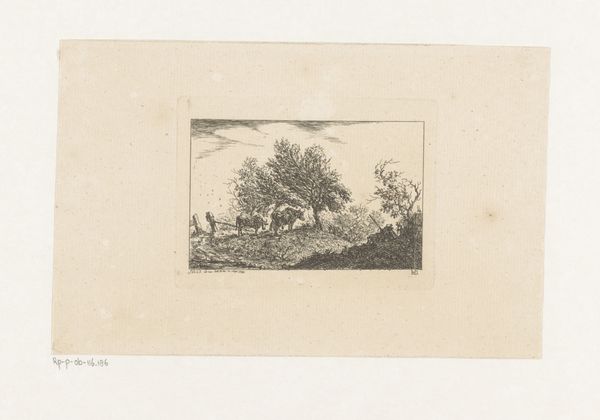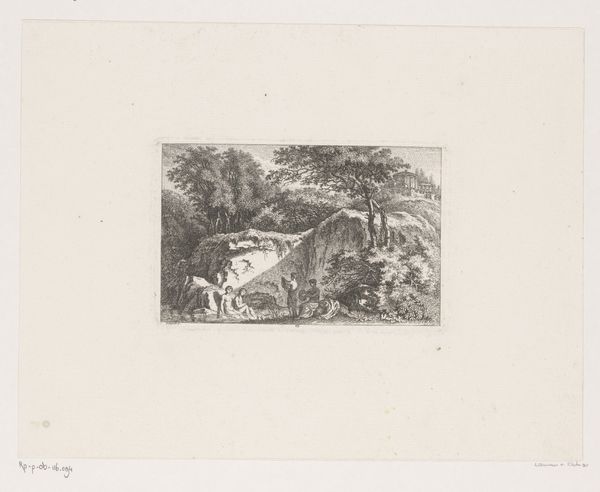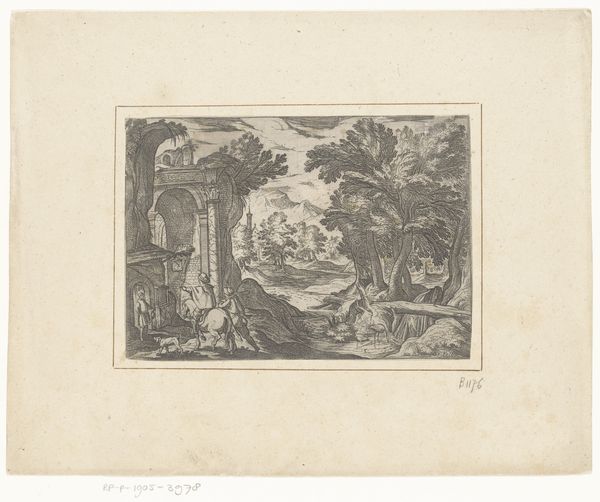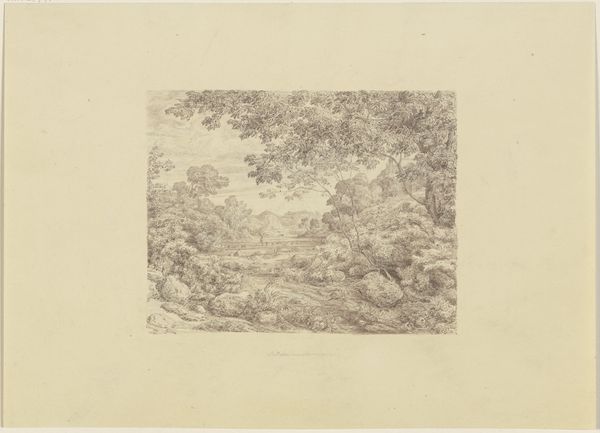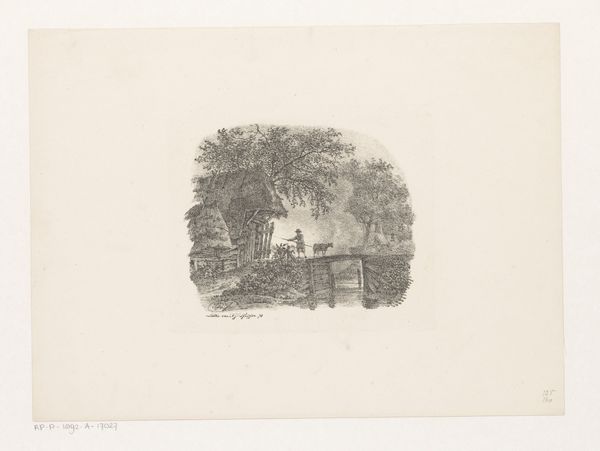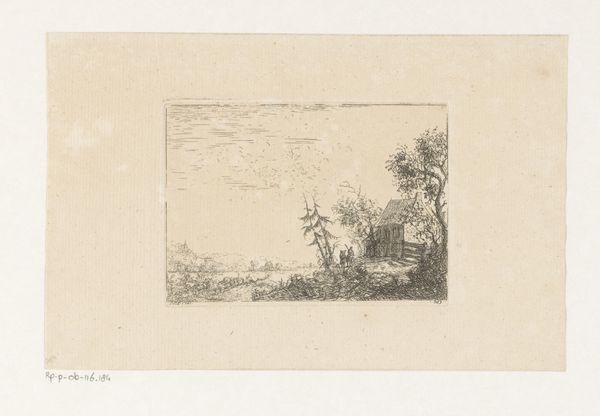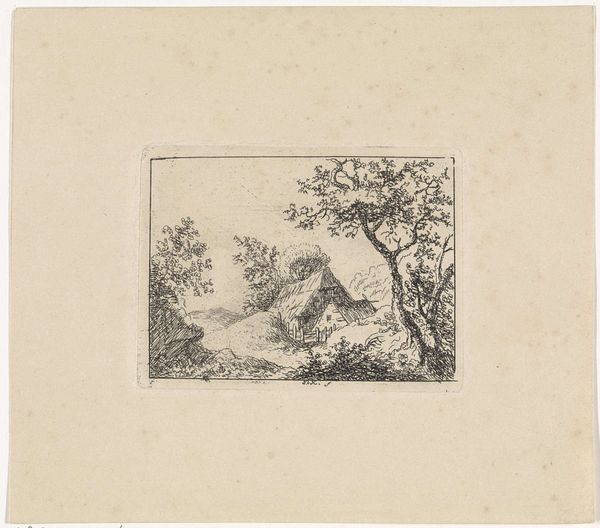
Landschap met onder een grot doorlopende rivier Possibly 1744
0:00
0:00
print, etching, paper, engraving
# print
#
etching
#
landscape
#
paper
#
engraving
Dimensions: height 90 mm, width 119 mm
Copyright: Rijks Museum: Open Domain
Editor: This etching, "Landschap met onder een grot doorlopende rivier," possibly from 1744 by Christian Ludwig von Hagedorn, captures a landscape viewed through a grotto. I’m struck by how this small print creates such a sense of depth and a touch of the sublime. What sociopolitical roles were landscape images portraying back then? Curator: It’s insightful that you noticed the element of the sublime. Landscape prints like these, particularly those depicting dramatic or picturesque scenery, were incredibly popular with the burgeoning middle class. They speak to the idea of accessibility, both in terms of price—prints were more affordable than paintings—and also, metaphorically, providing access to idealized views of nature that many urban dwellers couldn't experience firsthand. These landscapes often served to reinforce ideas about national identity and pride, depicting the land as a source of beauty and bounty, often implicitly tied to the ruling elite or powerful merchant classes. Were such prints popular, perhaps, to create a kind of shared national visual culture? Editor: That’s fascinating! So, they weren't just about aesthetics, but also about shaping a collective sense of belonging and even patriotism through ownership of these prints? Curator: Precisely. The museum becomes another interesting aspect here; it takes on a role, then, in defining taste and circulating these constructed images. The power of selection determines which landscapes became canonical, and therefore reinforced, particular historical narratives or social ideals, in terms of class. Editor: I had never considered how much these prints, seemingly simple landscapes, were intertwined with societal and political agendas. Curator: That's the beauty of art history. These pieces serve as mirrors reflecting the values and power structures of their time, highlighting that our access to nature itself is mediated. Now, you understand landscape as a construct? Editor: Absolutely, it's less about the scenery itself and more about what that scenery represented to people then, as it does today, mediated as it is by culture. Thank you.
Comments
No comments
Be the first to comment and join the conversation on the ultimate creative platform.

